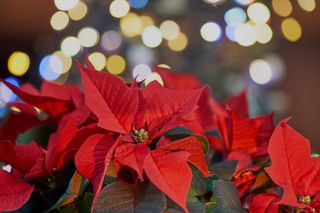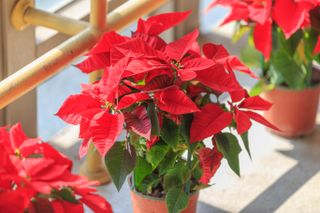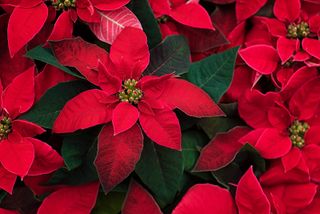They’re pretty, bright, and truly a spectacular touch of elegance — what are they? Poinsettias, of course! These precious blooms make for the perfect household plant and gift to loved ones, too. This popular plant can last for months if handled with much love and attention, including learning about its watering needs.
Understanding the fundamentals of poinsettia care is important to your flower’s growth and development — but how often should you water a poinsettia, and does it really need a watering schedule?
The answer is: you should water these winter houseplants according to the conditions yours are kept in. Checking the soil once or twice a week is a good habit to get into. Below, plant experts go into detail.
How Often Do Poinsettia Need Watering?
(Image credit: christmas-star.info)
“Poinsettias only need watering around once a week, but this is dependent on a few different factors like temperature and humidity,” Whitney Bromberg Hawkings, founder of Flowerbox. “As a rule, the upper half, or top inch, of your poinsettia’s soil should be dry, and the lighter the pot – the greater the need for water.
“When you water your poinsettia, ensure you water it thoroughly. Remove any dirty water from the saucer or bottom of the pot, and check for signs of root rot.”
Gardening expert Tony O’Neill tells us: “Water poinsettias only when the surface of the soil feels dry to the touch. Check the moisture level once every week, but this may vary based on indoor temperatures and humidity.” You can check your soil temperature by using this 4-in-1 Soil Moisture Meter from Amazon.
Can You Overwater Poinsettia?

(Image credit: Getty Images / annick vanderschelden photography)
Yes, you can, and oftentimes, when you overwater your precious poinsettia, its leaves can start yellowing and wilting away. If you want to make the most of your poinsettia, ensure you know what it needs and when it needs it.
Overwatering can lead to many issues, such as root rot, yellowing, dropping leaves, and even the entire plant losing its life. “Overwatering is a common issue with poinsettias,” says Tony. “Excess water can lead to root rot, indicated by wilting leaves despite wet soil.”
If this happens, it’s important to adjust your houseplant’s winter watering schedule and keep an eye out for how it does over the next few days.
What Type of Water Does Poinsettia Like?

(Image credit: Getty Images)
Watering houseplants is no easy feat. Sometimes, we water too little or too much, which can lead to unwanted outcomes and, sadly, dying plants. But did you know that poinsettias also have a water preference?
“If your tap water is high in salts or fluorides, use filtered or distilled water to avoid leaf burn,” says Tony. And if you’re wondering what temperature water should be for houseplants, the expert says: “Poinsettias prefer water at room temperature.”
The easiest way to test your water’s temperature is by using a water thermometer — such as this BOMATA Waterproof IPX7 Thermometer for Water and Liquid from Amazon.
A Guide to Watering Poinsettia

(Image credit: Getty Images)
It’s time to water your poinsettia, but what would be the best way to do this? Tony has provided us with a guide on exactly what you should do to see flourishing poinsettia blooms for seasons to come.
Step 1: Check the soil: Tony says, “Before watering, ensure the top inch of soil is dry.”
Step 2: Water thoroughly: “When watering, do so until it drains out of the bottom of the pot, but never let the poinsettia sit in standing water,” he adds.
Step 3: Assess the need: “During winter, when indoor heating can dry out plants faster, check your poinsettia more frequently.” If you’re worried about your plants health, it’s best to check regularly.
Step 4: Humidity considerations: Lastly Tony says, “In dry climates or heated indoor areas during winter, consider using a humidity tray or a room humidifier to keep the air around the poinsettia moist.” We recommend this Dreo 1gal Cool Mist Smart Ultrasonic Humidifier for Room from Target.
FAQs
Should my poinsettia have a watering schedule?
A set schedule is not always necessary according to the expert. He notes: “Rather than a strict schedule, it’s better to water based on the condition of the soil.”
The expert says “this approach adjusts for changes in environmental factors like heat and light during the winter.”








